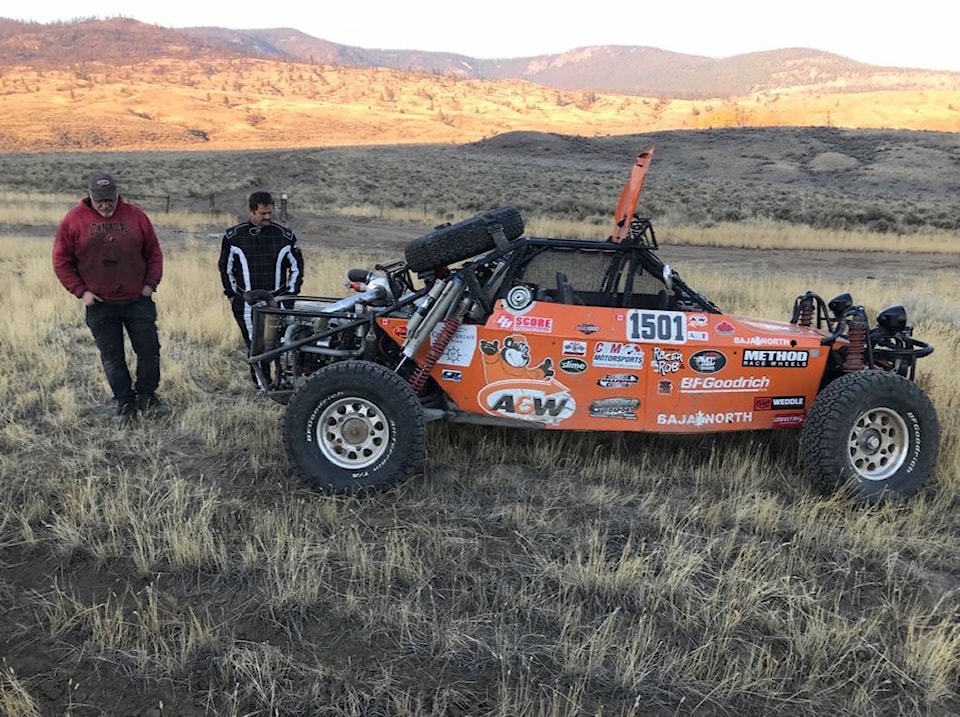MGC Motorsports—a Cache Creek race team—is heading for the famous Baja 1000 off-road race held on the Baja peninsula in Mexico.
The race team is made up of Wyatt McMurray (driver; Cache Creek), Rod Illingworth (crew chief; Cache Creek), Murray Condin (driver; Cache Creek), Ardie Condin (navigator; (Redwater, AB), Les Hein (driver; Vernon, BC), Dean Badminton (navigator; Maple Ridge, BC), James Ryl (navigator; Edmonton, AB), and Kim Kennedy, Rob Sauve, and Jim Thrower (support crew; all from Kamloops).
The Baja 1000 is one of the most grueling races in the world. This year marks the 50th anniversary of the legendary race, so organizers will be pulling out all the stops. The race starts in Ensenada, Mexico and ends 1,134 miles and 48 hours later in La Paz, Mexico. The route crosses back and forth over mountain ranges, deserts, rivers, and silt beds; fewer than half of the vehicles that start the race finish it.
The crew has spent the past few months feverishly rebuilding and bullet-proofing their “La Cholla”—an Unlimited Sportsman Buggy—as well as outfitting the support vehicles. “If the buggy breaks down you either have to go in and fix it or find a way to get it out to a road,” says Illingworth. “There are minimal tools on the buggy to do minor repairs, but any major repairs need to be done by one of the trucks.”
There are two 4-wheel drive off-road support trucks with welders, torches, air compressors, tools, and spare parts for major repairs, an off-road side-by-side to run parts in, and a motorhome to allow the crew the minimal rest they get over the 48-hour race.
“The race is grueling; however, it’s all the work leading up to the race that’s really the tough part,” says McMurray. “There’s the building of the car: except for the drive train, most parts have to be manufactured in-house in our shop in Cache Creek. There’s the logistics of getting everyone, and all the vehicles and equipment, down to Ensenada; the drivers, support crew, and vehicle schedules during the race; and then getting it all back home.
“The entire race is scheduled out to the minute. The race course is reviewed repeatedly. We have 2,684 minutes in our start-to-finish schedule. We need to schedule where each crew will be, where each driver/navigator team needs to be, and where the support trucks and the motorhome for rest need to be at any given time (they are constantly leap-frogging down the Peninsula), and it’s all down to the minute. However, it’s also predicated on the buggy making it through each section of the course to its next rendezvous spot. Generally, after the first pit stop it’s all adjusted on the fly.”
This is the second attempt MGC will make at the Baja race. Last year an electrical gremlin took them out of the race early. In February they competed in the Parker 425, a 425 mile off-road race in Parker, AZ. After a rollover, a broken axle, and many missing (vehicle) body parts, they completed the race in the middle of the pack.
“The Baja 1000 is a very dangerous and grueling race, and we simply want to complete it in a safe manner. We want everyone to come home in one piece,” says McMurray.
For more information on the race, go to the website (http://score-international.com/baja-1000/) or Google “2017 Baja 1000”. The race takes place November 16, 17, and 18. Anyone wanting to track the MGC Motorsports team can do so on https://bajatracking.com/ (car number 1501).
editorial@accjournal.ca
Like us on Facebook and follow us on Twitter
